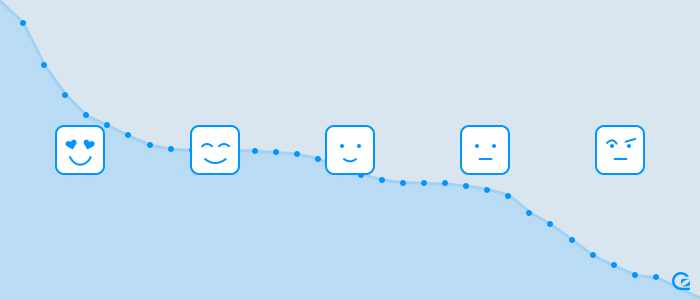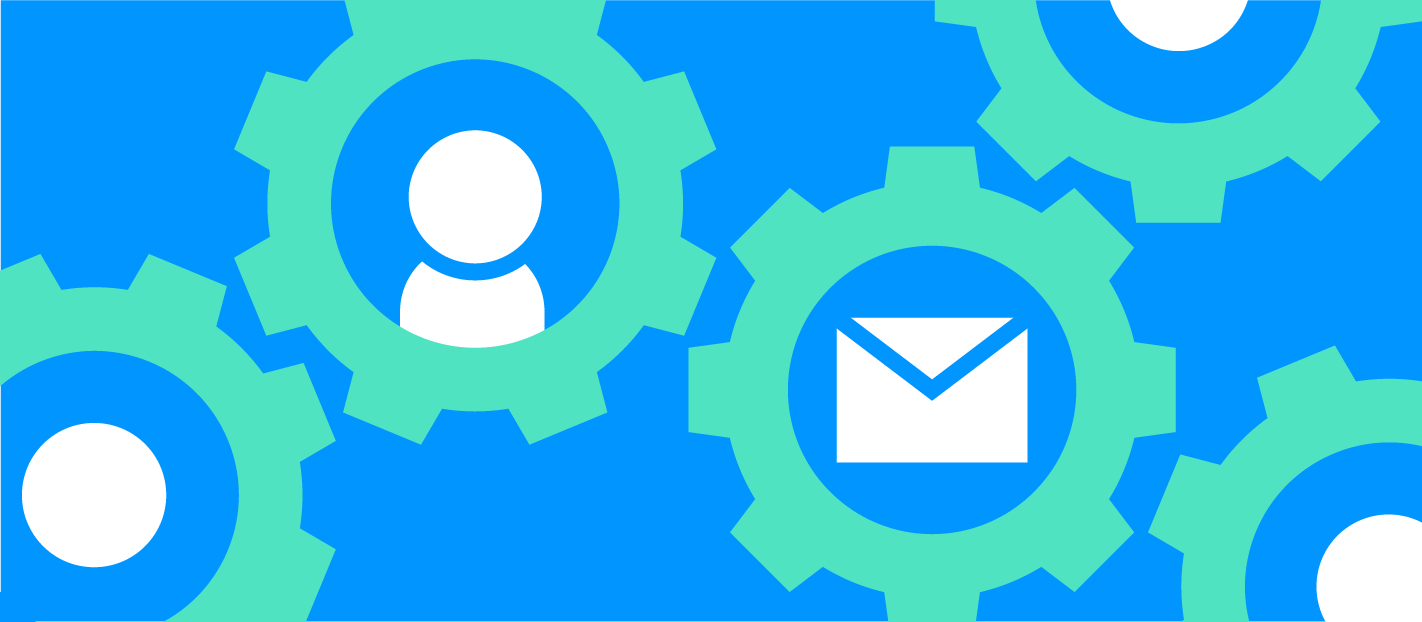
This is a guest post by Nicholas Holmes, of Nickelled.
Churn kills SaaS businesses.
When I ask ten SaaS businesses how many of their current customers they will still have in a year’s time, scarily few are able to tell me. For entrepreneurs who want to build long-lasting, impactful, and profitable businesses, that’s a problem.
So most SaaS businesses can’t give an accurate view of what their retention looks like, despite the tools available.
Many SaaS companies believe their current retention rate is acceptable, even when it’s not.
Only a few understand their retention rate and are right about their belief in it.
In this piece, I want to take a look at the key retention numbers every smart SaaS business should know about, and why they should know them. We’ll take a look at why retention is important, how it’s commonly defined, and the most appropriate way to measure it.
First up though, let’s dive into why retention matters for your business.
How smart SaaS businesses know retention is important
“It costs 6-7 times more to acquire a new customer than to retain an existing one.”
This oft-quoted statistic from Bain and Co. takes on a new importance for SaaS businesses, where retention stakes are arguably much higher.
One of the reasons that SaaS business model is so valuable is that the revenue compounds — for an introduction to what this means, I suggest reading this excellent post by Jason Lemkin.
Compounding revenue makes successful SaaS businesses very difficult to slow down, but for one critical factor — high churn. Once a SaaS business is rolling, even if the first-month revenue realisation (for new customers) is low, the only thing that can slow it down is a spike in churn.
Retention is effectively anti-churn. In all but a few edge cases, if your customers are coming back, they’re not churning.
It takes a surprising amount of time for most SaaS businesses to realise this. At the early stages of scale, most leaders are focused on customer acquisition, rather than retention. In many ways, that’s understandable — customer growth is normally equated to success, and in their eyes, more is better.
However, in some cases, SaaS is a leaky bucket. No matter how much a business fills the bucket, they’ll never achieve growth if customers are leaving at the same rate or higher.
I’ll use the example of a personal project of mine, clippings.me, to illustrate this. About six months ago our revenue growth, which until that point had been healthy, started to slow. After digging into the numbers, it became clear that churn was slowly choking off growth.
The issue wasn’t to do with a spike in churn rates which could be easily addressed. Rather, clippings.me was approaching a growth ceiling — a deadly phase in the life of a SaaS company, where the size of the user base combined with your churn rate (which may have been unremarkable to that point) effectively cancels out the number of new customers you’re adding.
Unless a business can reduce churn, grow faster or increase ARPU (we did all three), the growth ceiling can asphyxiate a startup. It’s one of the most obvious reasons why startups need a handle on retention, as well as growth — when a business approaches the growth ceiling, retention will be one of only three levers available to halt the decline.
What smart SaaS businesses ‘get’ about retention
“Customer satisfaction is worthless. Customer loyalty is priceless.”— Jeffrey Gitomer
Although customer retention is commonly seen as something that exists only in the SaaS world, business leaders have recognised the importance of a loyal customers for decades, and sometimes they have valued it to an even greater degree.
Long before airline frequent flyer programs and supermarket loyalty cards, merchants would hand out copper tokens, which could be collected by consumers and exchanged for items in a store. The practice became commonplace throughout the 19th century, for obvious reasons — stopping a customer switching to a competitor is a surefire way to increase the total value of that customer.
More recently, marketing analysts have claimed that preventing switching is only one of the reasons loyalty is so valuable — according to experts such as Fred Reichheld (inventor of the Net Promoter Score), there is a link between customer loyalty marketing and customer referrals. This means, effectively, that customer loyalty drives customer growth.
Many startups don’t consider retention to be about growth — they consider it to be about stopping churn. And stopping churn is important — don’t get me wrong, however, if you examine the really successful companies out there today, none of them got to that point solely by stopping churn. For Google, Apple, and Facebook regular users meant more users, and their revenue growth reflected their customer growth.
Customers retained by a SaaS business are more likely to expand their own usage (leading to upsell opportunities) and to invite other customers (increasing your viral coefficient) — both of these are vital to the long-term success of most SaaS businesses.
How smart SaaS businesses define retention
Now we’ll get into the measurement nuts and bolts — what exactly should businesses measure so that they can accurately answer the question posed at the top?
Generally, retention is measured using a couple of variables, so it’s important to make sure you’re on the right page before getting started.
In traditional businesses, retention tends to refer to customer retention. If I have 100 customers at the start of the month, and I lose ten throughout the month (and, for the sake of simplicity, don’t add any), my retention rate is 90%.
Add in the customers gained and the basic formula becomes this:
Retention Rate = ((CE – CN) / CS) × 100%
CE = number of customers at end of period
CN = number of new customers acquired during period
CS = number of customers at start of period
Sidenote: For most SaaS businesses, retention should only be measured using live — that is paying — customers. Throwing trial customers into the mix can yield unpredictable results and fundamentally doesn’t make a huge difference to the success of the business, but if you’re losing customers who are paying, you’ve got a far more serious problem.
Now, in a complex SaaS business, a customer’s value could be worth x1 or x10. That’s why SaaS businesses often prefer to measure retention based on revenue, rather than customers — it provides a clearer view of business performance and isn’t so easily masked by large or small customers churning.
Revenue retention calculation looks something more like the following:
Net revenue retention = RS / RE
RS = The company’s monthly recurring revenue (MRR) one year ago
RE = The current MRR from that same group of customers
Eagle-eyed readers will have spotted that we’re doing something different here — effectively, net revenue retention is a measurement of churn, in that it doesn’t account for new customers won during the period.
However, according to Todd Gardner of SaaS Capital, that’s the way VCs prefer to measure revenue retention:
"Net revenue retention is the most comprehensive churn metric because it actually tells the complete revenue story of the installed base of customers. It answers the question of what the company’s top-line revenue would do if it did not gain one more customer." – Todd Gardner
If you’re wondering about a benchmark, by the way, Todd suggests that "For established SaaS companies, net revenue retention typically ranges from 60% (really bad) to 150% (really good)”.
Why smart businesses measure beyond snapshot retention
In some eyes, both of the measurements above are vanity metrics. They may look good, and, for a VC, revenue retention may be a useful indicator of customer loyalty, but they offer very little actionable information to the business. If you choose to include new customers, both can be highly distorted by growth, in which an acquisition spree would effectively mask customers lost due to churn.
Measuring retention in a way that provides useful business intelligence is normally done in a different way — by examining cohorts.
Put simply, a cohort is a group, and smart SaaS businesses are able to slice and dice their data to look at the retention behaviour of these groups over time, rather than a snapshot in time (which is what customer and revenue retention measurements focus on).
Let’s take a simple example of cohort analysis:
Month 1 Retention = *User active 1 month after start-month */ Total users active in start-month
I chose to cohort by month here, because time is the most common cohort segment to use — businesses will often plot retention by the different weeks or months in which users join, so that they can see the effect of changes they make over time in aggregate.
Measuring cohorts by time allows a business to surface insights such as:
- 50% of users who signed up in January were active one month later.
- Only 30% of users who signed up in February were active one month later.
This is particularly effective, when paired with intelligence about a company’s marketing programme, allowing us to extrapolate the quality of leads generated at a given point in the marketing cycle.
Sophisticated cohort analysis software allows us to go even further than this and begin to segment, based on user properties or actions.
For instance, it’s possible to pull out the retention of cohorts made up of organic visitors and social visitors to assess the effectiveness of each channel. It’s also possible to pull out the retention of Chrome users vs Safari users to establish whether the customer experience is different between browsers.
At the most complex level, SaaS businesses can break users up into cohorts that took an action and those who didn’t. For instance, in the below example, some users added a logo and some didn’t. Those who added a logo were three times more likely to convert than those who didn’t — and that’s the kind of insight that is far from being a vanity metric and can make a measurable impact on your business.
Cohort retention is arguably the gold standard when it comes to measuring retention, and it’s certainly what smart SaaS businesses use!
How smart SaaS businesses go further with retention
Understanding cohort-based retention is a valuable first step. But genuinely smart SaaS businesses go further.
For example, mapping retention to the stage of the user lifecycle enables you to break down retention into different phases.
To illustrate this, we might take the example of an accounting app, where a user’s activity peaks at the start during setup, perhaps drops during the low-activity mid-month period, and then the user re-engages towards the end of the month to reconcile transactions.
This sort of complex measurement would be impossible to show using snapshot analysis. But cohorts give us the power to examine a group’s behaviours through the customer’s lifetime, and then make changes along the customer journey to try to improve things.
Finally, smart businesses often measure the cost of retention; because, while it may be the case that it costs 6-7 times more to acquire a new customer than to retain an existing one, retention is still a cost to the business, and smart businesses know that it needs quantifying.
Totting up the value added by customer success managers, customer engagement software, customer marketing, help-desk software, and similar expenses is often overlooked, but it’s a vital calculation if you want to prove the ROI of customer retention and make the case for a retention budget, rather than an acquisition budget as a channel for growing your business.
For more on this topic, it’s worth taking a look at Totango’s fantastic white paper.
Are you a smart SaaS business?
Hopefully you’re feeling inspired to get the answer to the question I originally posed — “how many of my existing customers will I have 365 days from now?”
It’s a question that you should now be feeling confident in answering, and it’s an answer that will change over time — because after measuring retention, the one thing that all smart SaaS businesses do is improve it.
About the author
Nicholas Holmes heads up growth at Nickelled (step-by-step website tutorials to grow retention and engagement), and also runs Clippings.me (a beautiful writing portfolio to showcase your work.)

